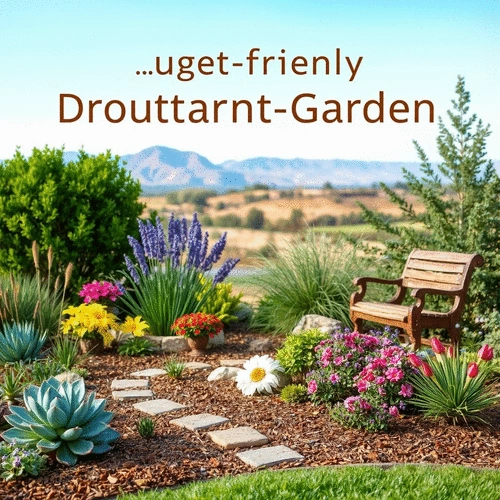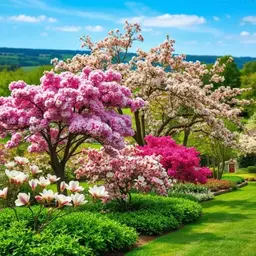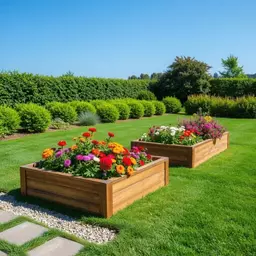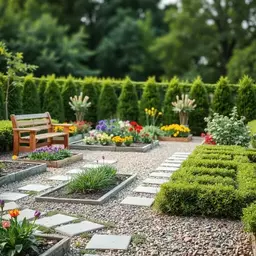Creating a drought-tolerant garden not only benefits the environment but also saves you money in the long run. With the right strategies, you can cultivate a stunning outdoor space that flourishes in dry conditions. Ready to explore how you can make this a reality?
What You Will Learn
- Water Conservation: Discover how drought-tolerant gardens significantly reduce water usage, especially crucial during dry spells.
- Low Maintenance Gardening: Learn why these gardens require less upkeep once established, allowing you to enjoy your space without constant care.
- Financial Benefits: Understand how reduced water bills from a drought-tolerant garden can lead to substantial savings over time.
- Native Plant Selection: Find out why choosing native drought-resistant plants can be both cost-effective and beneficial for local ecosystems.
- Budget-Friendly Strategies: Explore practical tips for creating your garden on a budget, from setting clear spending limits to DIY options.
- Efficient Irrigation Solutions: Implement cost-effective irrigation methods, like drip systems and rain barrels, to maximize water efficiency.
- Garden Layout Planning: Learn how to effectively arrange your plants for beauty and efficiency, optimizing the benefits of microclimates.
Benefits of Drought-Tolerant Gardening
These gardens contribute to sustainability and cost savings in several key areas:
Water Conservation
These gardens use significantly less water, which is crucial during times of drought.
Low Maintenance
Once established, these plants require minimal care and resources.
Financial Savings
Reduced water usage results in lower utility bills over time.
Increased Biodiversity
Drought-tolerant gardens attract various pollinators, enhancing local ecosystems.
Understanding the Essentials of Drought-Tolerant Gardening on a Budget
As a garden enthusiast, I can't stress enough how important it is to embrace drought-tolerant gardening. Not only does it help conserve water, but it also leads to significant long-term savings on your water bill. By establishing a garden designed to thrive in dry conditions, you're not just making a smart financial choice; you're also contributing positively to the environment. Every little bit counts when it comes to water conservation! For more ideas on how to improve your outdoor space, consider plants that boost curb appeal.
Consider this: a well-planned drought-tolerant garden can reduce the need for constant watering, which in turn minimizes the energy used for pumping and treating water. That means less strain on your resources and a healthier planet! Plus, you’ll find that many drought-tolerant plants are low-maintenance, freeing you to enjoy your garden without constant upkeep.
Recognizing the Importance of Drought-Tolerant Gardens
When it comes to gardening, there's a growing awareness of the need to create sustainable spaces. Drought-tolerant gardens are not only eco-friendly but also cost-effective. Here are some important benefits:
- Water Conservation: These gardens use less water, which is essential during times of drought.
- Low Maintenance: Once established, drought-tolerant plants typically require less care and fewer resources.
- Financial Savings: Reduced water usage leads to lower utility bills over time.
- Increased Biodiversity: These gardens can attract a variety of pollinators, contributing to local ecosystems.
Every gardener wants to make a positive impact, and choosing drought-tolerant plants is a fantastic way to do just that. Imagine walking through your landscape, knowing you've made a choice that benefits both your home and the environment. It's a rewarding feeling, isn’t it?
Defining a Budget-Friendly Approach to Landscaping
Now that we understand the significance of these gardens, let’s dive into how to approach this project without breaking the bank! A budget-friendly landscaping plan begins with careful consideration. Here’s how you can get started:
- Set a Clear Budget: Determine how much you can comfortably spend on plants, soil, and other materials.
- Prioritize Plants: Choose drought-tolerant plants that are native to your area; they tend to be more affordable and easier to maintain.
- DIY Elements: Consider doing some of the work yourself. This can significantly cut costs while also giving you a sense of accomplishment.
- Avoid Impulse Buys: Stick to your plan and resist the urge to buy plants or materials that don’t fit your budget.
By planning ahead and being mindful of your spending, you can create a beautiful, sustainable garden without overspending. At Garden Plan Guide, I’ve seen many homeowners transform their spaces on a budget, and I believe you can too! Remember, it's all about making smart choices and staying focused on your goals. For more insights on efficient landscaping, check out this guide on selecting low-maintenance landscaping plants.
Pro Tip
When selecting drought-tolerant plants, consider grouping them according to their water needs. This not only optimizes your watering strategy but also enhances the visual appeal of your garden. By placing plants with similar moisture requirements together, you can create a more sustainable and visually harmonious landscape.
Frequently Asked Questions About Drought-Tolerant Gardening
- What are the main benefits of a drought-tolerant garden?
- Drought-tolerant gardens offer significant benefits, including substantial water conservation, reduced maintenance requirements once established, long-term financial savings on water bills, and increased biodiversity by attracting pollinators.
- How does a drought-tolerant garden save money?
- By utilizing plants that require less water, these gardens reduce your overall water consumption, leading to lower utility bills. Additionally, many drought-tolerant plants are native and low-maintenance, cutting down on replacement costs and ongoing care expenses.
- What types of plants are best for drought-tolerant gardening?
- Native plants are highly recommended as they are already adapted to local climate conditions. Succulents, Mediterranean plants, and many ornamental grasses are also excellent choices for their low water needs.
- Can I create a drought-tolerant garden on a budget?
- Absolutely! Key strategies include setting a clear budget, prioritizing native and affordable plants, undertaking DIY tasks, and avoiding impulse purchases. Planning ahead is crucial for cost-effective landscaping.
- What irrigation methods are efficient for drought-tolerant gardens?
- Efficient irrigation solutions include drip irrigation systems, which deliver water directly to the plant roots, and rain barrels for collecting and reusing rainwater. Grouping plants with similar water needs also optimizes watering efficiency.
Summarizing the Benefits of Designing a Drought-Tolerant Garden
As we wrap up our exploration of drought-tolerant gardening, it’s clear that this approach not only conserves water but also enriches our outdoor spaces without breaking the bank. By implementing the strategies we've discussed, you can *significantly reduce* your water usage while still enjoying a vibrant garden. Remember, creating a drought-tolerant garden is about making smart choices that benefit both your pocket and the environment!
Throughout this journey, we've highlighted essential strategies, from selecting drought-resistant plants to planning efficient irrigation systems. Each step contributes to a greener garden that thrives even in dry conditions. Plus, the cost-saving potential is a win-win situation—not just for your wallet but for the planet, too! For more inspiration, explore how to incorporate low-maintenance plants for gardens.
Recapping Key Strategies and Insights
Let’s take a moment to recap the pivotal insights we've covered. Here are the top strategies to keep in mind:
- Evaluate your garden conditions to create a tailored design plan.
- Incorporate native plants and succulents that require minimal water.
- Utilize cost-effective irrigation solutions, such as drip systems and rain barrels.
- Implement mulch and microclimates to maintain soil moisture.
- Plan seasonal care routines to ensure your garden remains healthy year-round.
By following these steps, you're not just setting your garden up for success; you're also joining a movement towards sustainability that resonates with my mission at Garden Plan Guide. I truly believe that everyone can have a beautiful, eco-friendly garden that reflects their personal style! You might also find valuable tips on creating an inviting space by focusing on designing a welcoming home entrance.
Encouraging Action: Steps to Start Your Garden Project
Now that you're equipped with the knowledge to embark on your drought-tolerant garden journey, it’s time to take action! Here’s how to get started:
- Assess Your Space: Take note of the sunlight, soil type, and water flow in your garden.
- Create a Budget: Determine how much you can invest in plants and materials.
- Select Your Plants: Choose a mix of native and drought-tolerant plants that suit your style.
- Plan Your Layout: Decide how to arrange your plants for optimal beauty and efficiency.
- Implement Irrigation Solutions: Set up a drip irrigation system or rain barrels to save water.
These steps will help set you on the right path, turning your dream drought-tolerant garden into a reality. Remember, every small action counts towards making your outdoor space more sustainable. I can’t wait to see what you create! Share your progress with us at Garden Plan Guide—your journey can inspire others, too! For more about enhancing your outdoor space, consider learning about enhancing curb appeal with trees.
Recap of Key Points
Here is a quick recap of the important points discussed in the article:
- Water Conservation: Drought-tolerant gardens significantly reduce water usage, which is essential, especially during dry spells.
- Low Maintenance: Once established, these gardens require less upkeep, allowing you to enjoy your space more freely.
- Financial Savings: By using less water, you can see a notable decrease in your utility bills over time.
- Native Plants: Prioritize selecting native drought-tolerant plants to enhance sustainability and reduce costs.
- DIY Projects: Consider taking on some landscaping tasks yourself to save money and gain satisfaction from your work.
- Planning and Budgeting: Establish a clear budget and stick to it to avoid impulse purchases and ensure a successful garden project.










